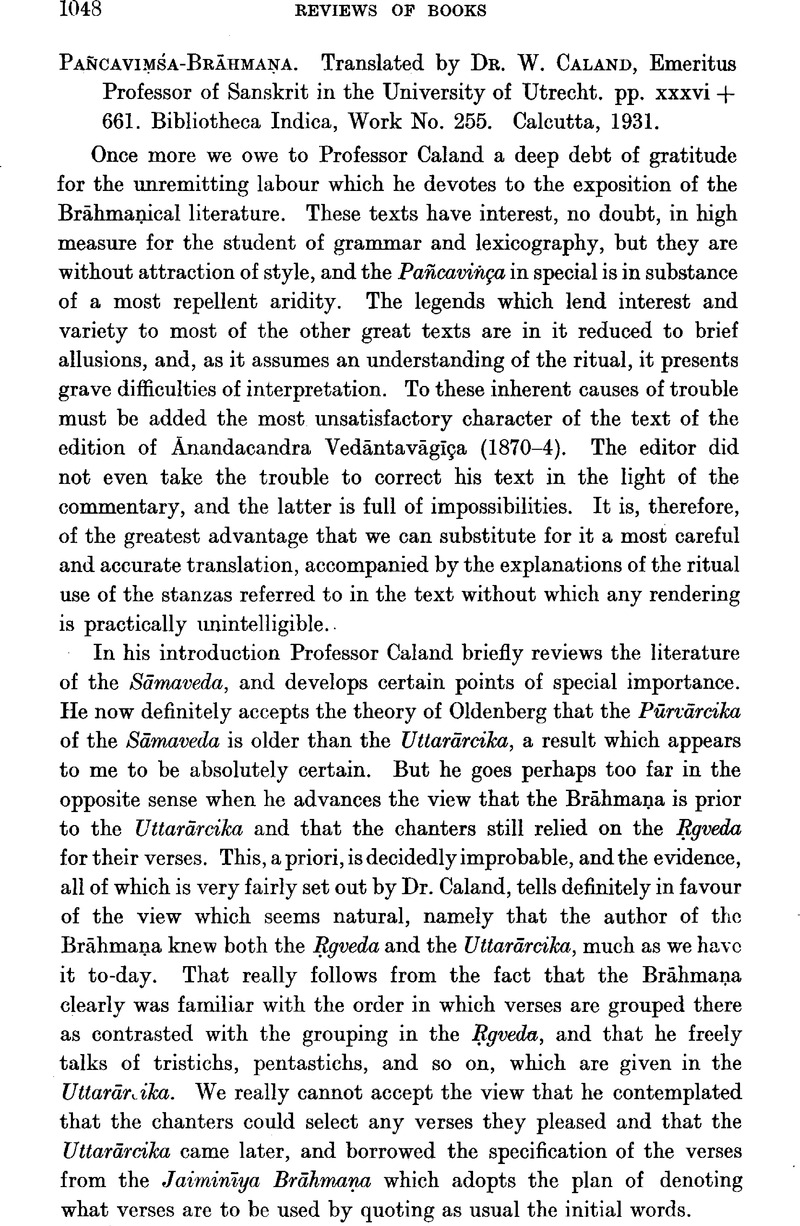Article contents
Pañcaviṃśa-Brāhmaṇa. Translated by W. CalandDr., Emeritus Professor of Sanskrit in the University of Utrecht, pp. xxxvi + 661. Bibliotheca Indica, Work No. 255. Calcutta, 1931.
Published online by Cambridge University Press: 24 December 2009
Abstract

- Type
- Reviews of Books
- Information
- Copyright
- Copyright © School of Oriental and African Studies 1932
References
page 1049 note 1 This is a frequent phenomenon in that curious text, the Bhāgavata Purāṇa; see Meier, F. J., ZII., vii, 77.Google Scholar It has also locatives in an, tanvam, and saṁçayire (x, 66, 25).
page 1049 note 2 BSOS. iv, 619, 620.
page 1050 note 1 For sa niruktasāmeti Caland with justice suggests san in both texts.
page 1050 note 2 BSOS. 1, iv, 178Google Scholar, commenting on Caland's earlier view of this word.
page 1051 note 1 In the Mahābhārata, ix, 43, 37, the accuser's cry is mitrahan pāpa.
page 1052 note 1 Compare Macdonell, , Vedic Grammar, p. 344Google Scholar; Renou, , Grammaire Sanscrite, § 337.Google Scholar
page 1052 note 2 dhinavat is, of course, to be substituted for dhinvat, and mā duṣat, viii, 2, 10, is an injunctive, not a subjunctive, as the negativemāproves.
page 1054 note 2 For later examples, see Wackernagel, , Altindische Grammatik, i, 158.Google Scholar
page 1054 note 2 See Whitney, , Sanskrit Grammar, § 938Google Scholar; Renou, op. cit., § 340.
- 1
- Cited by


